Flowering Dogwood Trees are a true gem in any garden or landscape. Their stunning, colorful blooms and graceful branches add beauty and charm to any outdoor space. Remember to choose a suitable location with well-drained soil and partial shade. Plant your tree at the right depth, making sure to provide enough water during its establishment period.
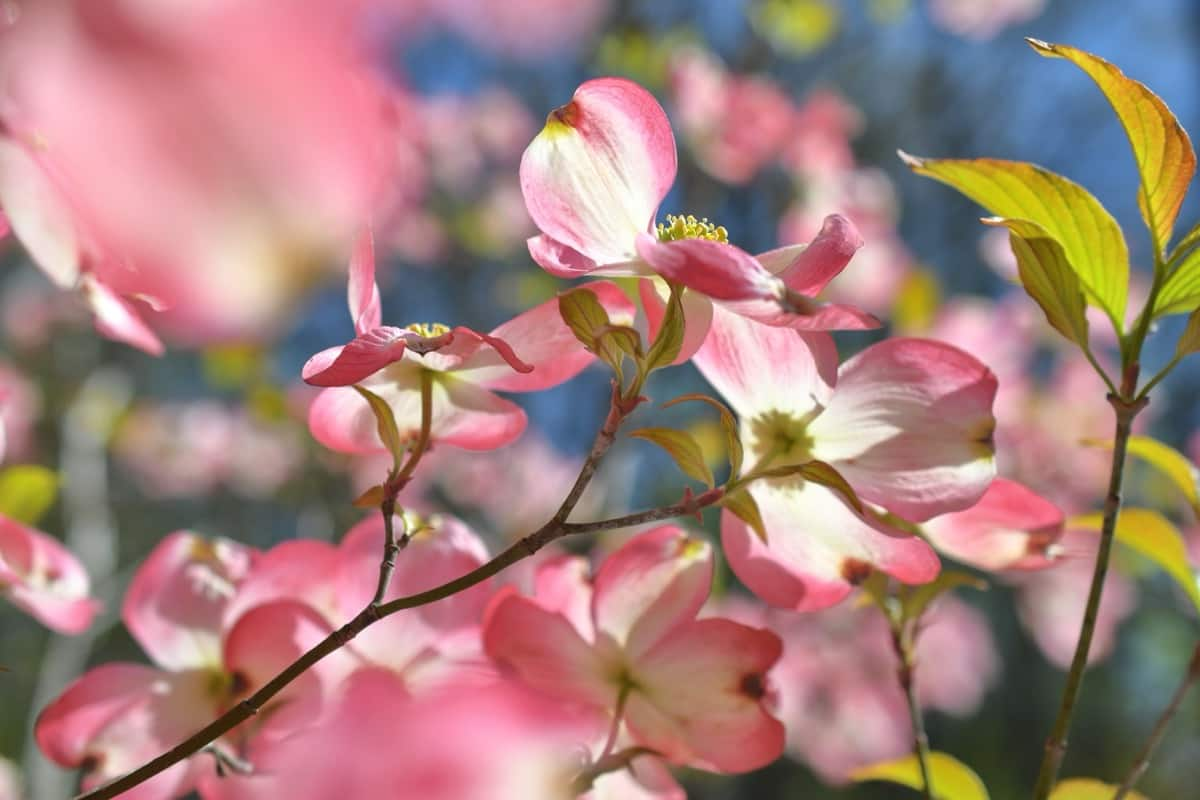
Once planted, continue caring for your tree by regularly watering, mulching, fertilizing, and monitoring for any signs of diseases or pests. Growing and caring for flowering Dogwood trees requires dedication but yields remarkable results. The vibrant colors of their flowers will bring joy throughout springtime, while their attractive foliage adds beauty all year round.
| Name | Flowering Dogwood |
| Sun Exposure | Partial |
| Soil Type & pH | well-drained, 5.5 to 6.5 |
| Mature Size | 15 to 25 feet tall and wide |
| Bloom Time | Spring |
How to Grow Flowering Dogwood Trees
Choosing the Right Dogwood Tree Variety for Your Garden: Factors to Consider
Choosing the right Dogwood tree variety for your garden is an important decision that can greatly impact your landscape’s overall look and feel. There are several factors to consider when making this choice, including size, color, and bloom time. You should think about the size of the tree. Dogwoods come in various sizes, ranging from dwarf varieties that stay small to larger ones that can reach up to 25 feet tall.
Consider the available space in your garden and how much room you have for a tree before selecting. Another factor to consider is the color of the flowers. Dogwood trees produce blooms in various shades, such as white, pink, or red. Some Dogwood varieties flower early in spring, while others bloom later. Choose a variety with a bloom time that aligns with your desired aesthetic and overall garden plan.
Selecting the Ideal Location for Planting Dogwood Trees: Sunlight, Soil, and Drainage Requirements
When planting Dogwood trees, selecting the ideal location is crucial for their health and growth. Flowering Dogwood light requirements are partial shade or filtered sunlight. They prefer the morning sun with some afternoon shade to protect them from scorching heat. Planting them under large deciduous trees can provide the perfect balance of light and shade.
In case you missed it: 14 Best Spring-flowering Bulbs to Grow in Your Garden
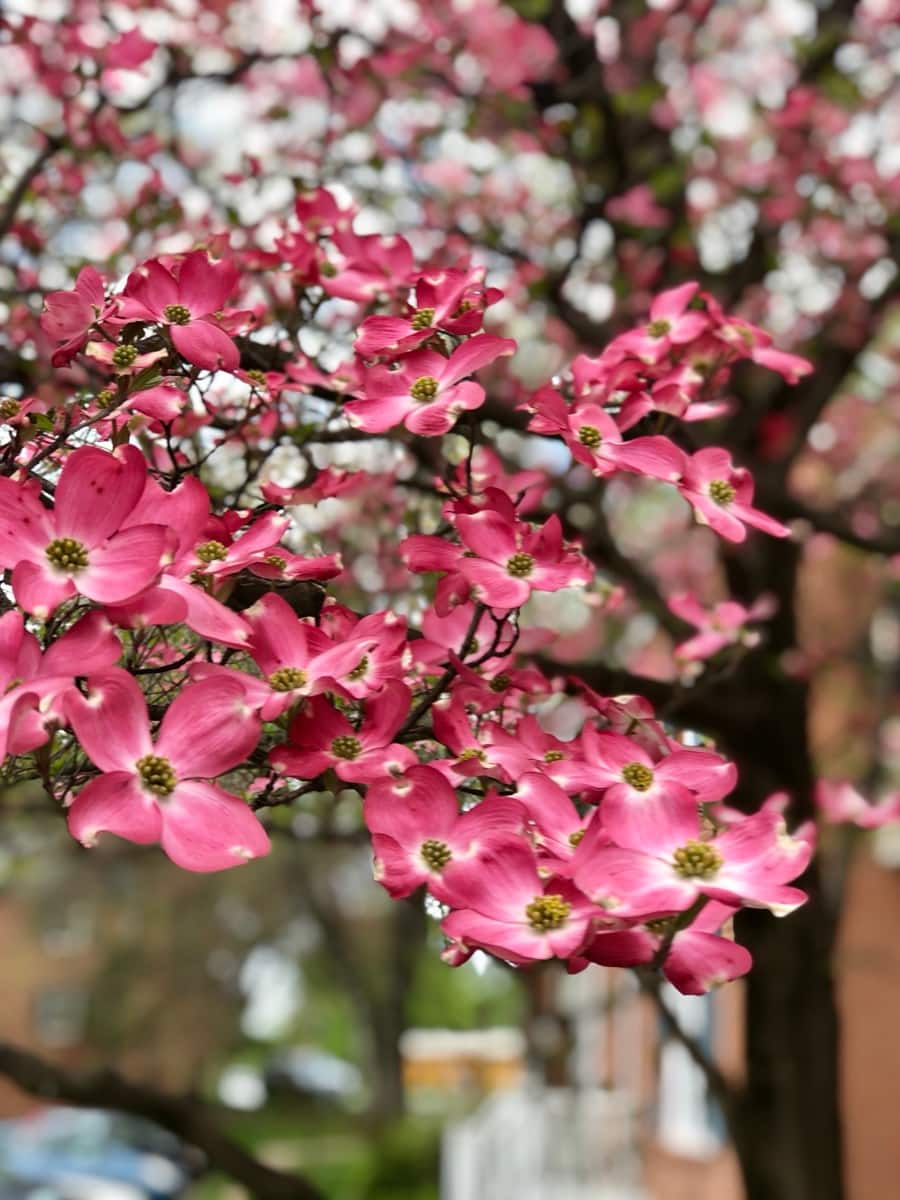
Next, soil composition plays a vital role in their success. Dogwoods prefer well-drained soil rich in organic matter. In addition to soil quality, good drainage is essential for healthy Dogwood tree growth. Poorly drained areas can cause root suffocation and fungal infections. Ensure the planting site has proper drainage by avoiding low-lying areas where water accumulates.
Preparing the Soil for Dogwood Tree Planting: Tips for Proper Soil Composition and pH Levels
When preparing the soil for planting Dogwood trees, proper soil composition and pH levels are crucial. Flowering Dogwood soil requirements are well-draining soil that is rich in organic matter. Test your soil’s pH level to ensure it is suitable for Dogwood tree growth. Dogwoods prefer soil pH ranging from 5.5 to 6.5.
Next, focus on improving the overall composition of your soil. Incorporate organic matter to enhance its fertility and drainage capabilities. This will provide essential nutrients for healthy root development and improve water retention without causing waterlogging issues. Before planting your Dogwood tree, remove any weeds or unwanted vegetation from the area. This will prevent competition for nutrients and give your new tree a better chance at establishing itself successfully.
Planting Dogwood Trees: Step-by-Step Instructions for a Successful Planting Process
Choose a spot with partial shade or filtered sunlight for your Dogwood tree. These beauties prefer well-drained soil with a slightly acidic pH level. How to plant a Dogwood tree? Before planting, prepare the soil properly by loosening it with a garden fork or tiller. Next, dig a hole that is twice as deep as the root ball of your young Dogwood tree. Gently remove the tree and place it in the hole, ensuring it sits at ground level.
Carefully backfill the hole with soil while gently pressing down around the tree’s base to eliminate air pockets. After planting, water thoroughly settles the soil and provides moisture for root establishment. Remember to mulch around your newly planted Dogwood tree using organic materials such as wood chips or shredded bark. This will help conserve moisture, suppress weeds, and protect against extreme temperature fluctuations.
Watering Dogwood Trees: Essential Guidelines for Proper Irrigation and Moisture Management
When watering your Dogwood trees, finding the right balance is crucial. First and foremost, it’s important to understand that Dogwood trees prefer moist soil but can also tolerate some dryness. Overwatering causes root rot and other issues, so avoiding excessive watering is best. To determine when it’s time to water your Dogwood tree, check the soil’s moisture level.
In case you missed it: The Best Plants for USDA Zone 9: Top Trees, Flowering, Perennial, Drought-Tolerant, and Container Plants
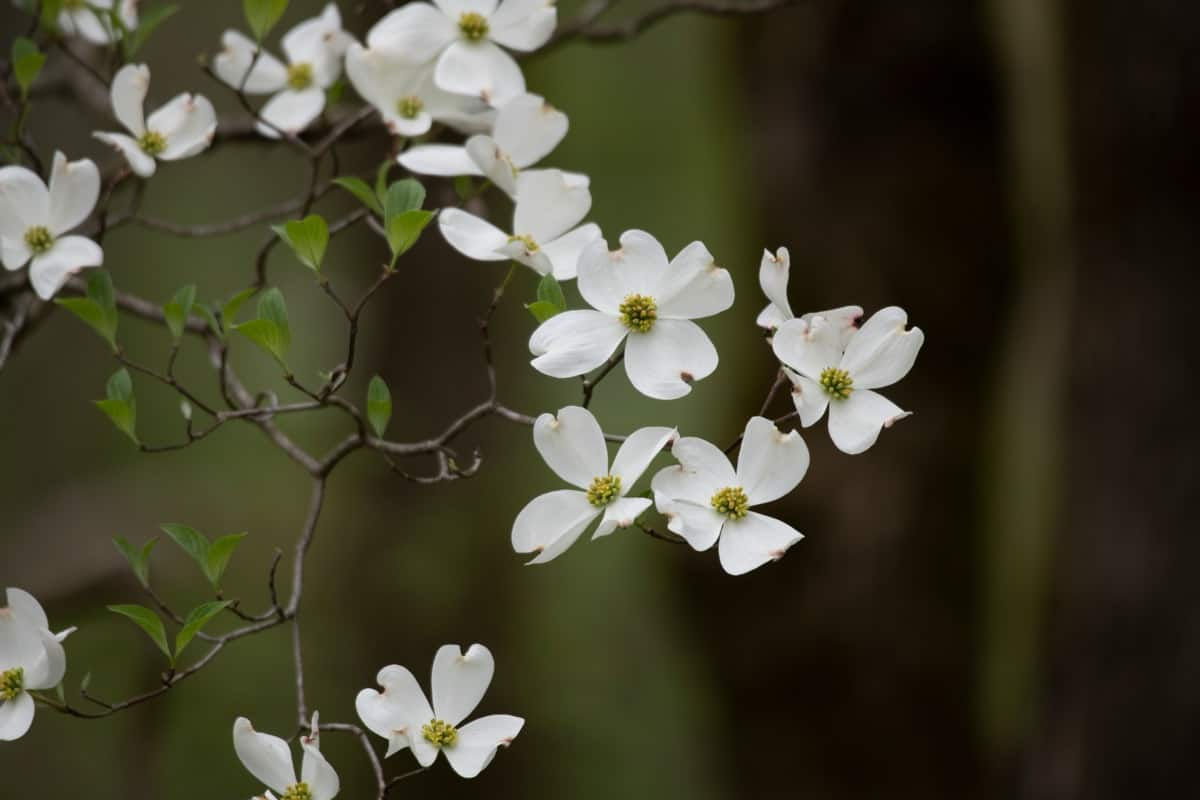
Aim for a slow and deep soaking rather than a quick sprinkle when watering. This allows the water to penetrate the roots where it is needed most. Use a drip irrigation system for more efficient watering. During hot weather or drought conditions, you may need to increase the frequency and amount of watering. Remember not to overdo it – soggy soil can suffocate delicate Dogwood roots.
Propagating Dogwood Trees: Methods for Growing New Plants from Seeds or Cuttings
Growing Dogwood from seeds can be an exciting and rewarding process. Start by collecting fresh seeds when mature and ripe in the fall. Remove any remaining flesh from the seed and place it in a plastic bag filled with moist peat moss or vermiculite. Store the bag in a cool location, like your refrigerator, for at least three months to mimic winter dormancy.
Once the chilling period is over, prepare pots with well-draining potting soil and plant each seed about half an inch deep. Keep the soil moist but not waterlogged. With patience and care, tiny sprouts will emerge after several weeks. Alternatively, taking cuttings is an excellent option if you prefer a quicker propagation method. When new growth is on the tree in late spring or early summer, select healthy stems around six inches long and free of diseases or pests.
Using sharp pruning shears or scissors dipped in rubbing alcohol to prevent disease transmission, make clean cuts just below leaf nodes on each cutting. Remove all leaves except for those at the tip. Next, dip each cutting into rooting hormone powder to encourage root development before inserting it into small pots filled with well-draining potting mix. Mist the cuttings regularly to maintain humidity until roots form within 6-8 weeks.
Transplanting Mature Dogwood Trees: Guidelines for Successful Relocation
Transplanting mature Dogwood trees can be daunting, but it can be done successfully with the right knowledge and techniques. First and foremost, timing is crucial when transplanting mature Dogwood trees. The best time to do this is during the dormant season in late fall or early spring.
Before digging up the tree, prepare the new location properly. Choose a spot with similar soil composition and drainage to the original location. Dig a hole slightly larger than the tree’s root ball. Carefully dig around the perimeter of the root ball using sharp tools to minimize damage to delicate roots. Lift and move it gently into a burlap-covered container for transportation.
Once you have safely transported your Dogwood tree to its new home, plant it at ground level, ensuring proper alignment with neighboring plants or structures. Backfill with native soil mixed with organic matter and water thoroughly after planting. After transplantation, provide your newly relocated Dogwood tree with adequate care and attention. Keep an eye on moisture levels in soil and air by regularly watering during dry spells and providing mulch around the base of your transplanted tree.
Mulching Dogwood Trees: Benefits, Techniques, and Best Mulch Types to Use
When caring for flowering Dogwood trees, mulching is an essential practice that can provide numerous benefits. First and foremost, mulch helps regulate soil temperature by insulating the roots from extreme heat or cold. This is particularly important for Dogwoods since they prefer cool soil conditions. In addition to temperature regulation, mulch helps retain soil moisture. Acting as a barrier between the ground and the air reduces evaporation and moistens the soil. This is especially beneficial when water conservation becomes crucial during dry spells or hot summer months.
In case you missed it: 16 Best Evergreen Flowering Shrubs for Hedges
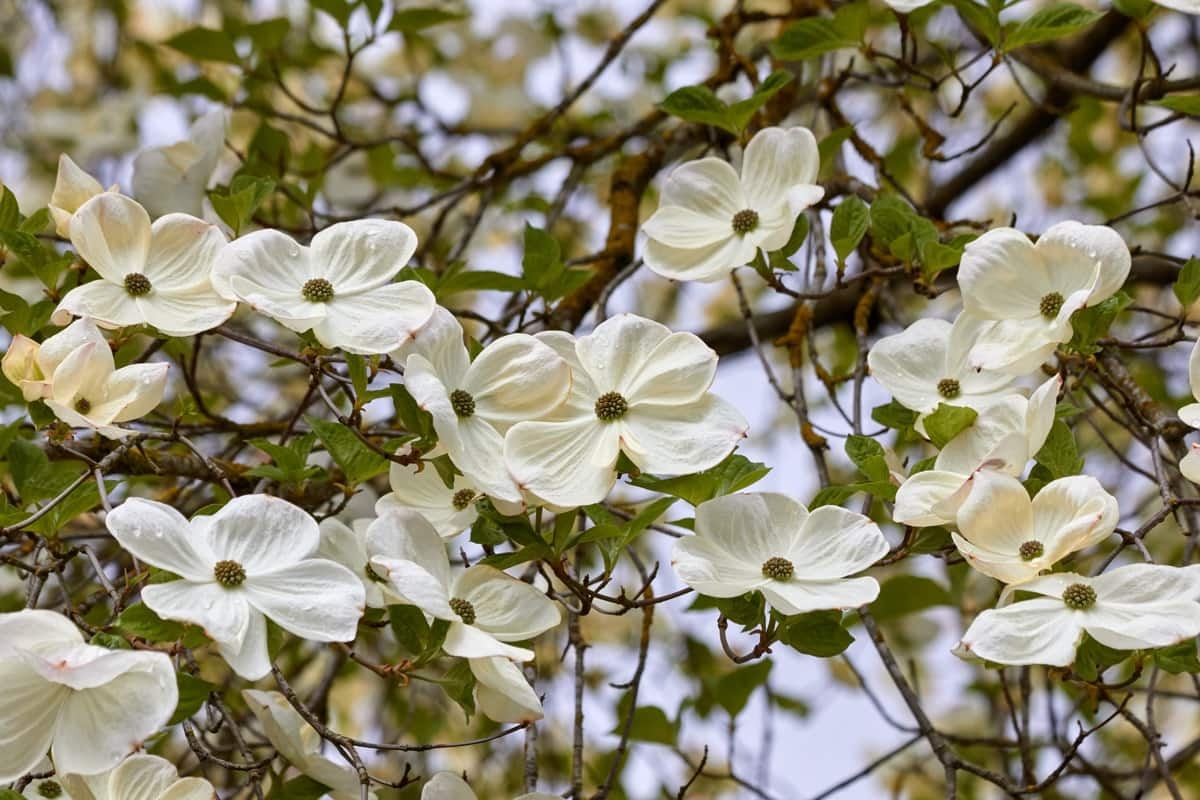
Choosing the right type of mulch is equally important for optimal tree growth. Avoid using fresh grass clippings or sawdust, as these can rob nitrogen from your plants. To effectively apply mulch around your Dogwood tree, remove any weeds or grass within a three-foot radius around its base. Then, spread a layer of mulch about two to four inches thick evenly across this area while avoiding direct contact with the trunk.
Fertilizing Dogwood Trees: Understanding Nutritional Needs and Choosing the Right Fertilizer
Proper fertilization is crucial for the healthy growth of Dogwood trees. By understanding their nutritional needs and choosing the right fertilizer, you can ensure that your trees thrive year after year. Dogwood trees require a balanced blend of nutrients to maintain their health and vitality. A general rule of thumb is to use a slow-release fertilizer with an NPK ratio of 10-10-10.
When selecting a fertilizer, consider organic options like compost or well-decomposed manure. Organic fertilizers provide essential nutrients and improve soil structure and microbial activity. To apply the fertilizer effectively, spread it evenly around the tree’s drip line – where rainwater would naturally fall from its branches. Avoid placing it too close to the trunk, which can cause a root burn.
Pruning Dogwood Trees: When, why, and How to Prune for Optimal Growth and Shape
The best time to prune Dogwood trees is late winter or early spring. This allows for proper healing before new growth begins. Pruning helps maintain a desired shape and promotes optimal growth by removing dead or diseased branches. It also improves air circulation within the canopy and encourages better sunlight penetration, leading to healthier foliage and more abundant blossoms.
Start by removing dead or damaged branches using clean tools that won’t spread disease. Next, thin out crowded areas by selectively cutting back branches where they intersect or cross each other. Avoid cutting too close or leaving stubs, as this can weaken the tree’s structure.
Dealing with Common Pests and Diseases in Dogwood Trees: Identification and Control Measures
Dogwood trees are not immune to pests and diseases, but you can keep them healthy and vibrant with proper care and attention. One of the most prevalent problems is powdery mildew. To prevent its spread, ensure good air circulation around the tree by pruning any crowded branches. Applying fungicides can also help control the disease. Another troublesome pest is the Dogwood borer, which burrows into tree trunks, causing extensive damage. Regularly inspect your trees for signs such as holes or sawdust-like frass near the base.
In case you missed it: 17 Best Flowering Succulents: For Indoors and Outdoors
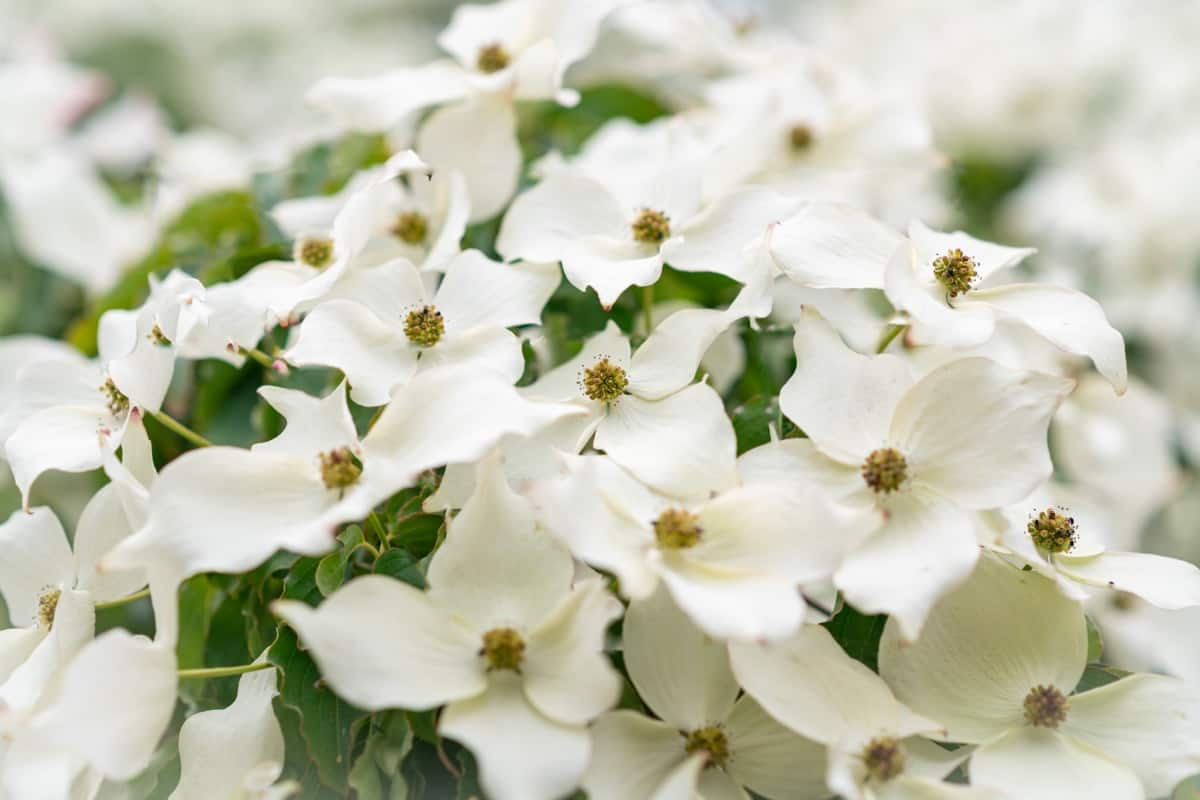
If infestation occurs, treat affected areas with insecticides specifically formulated for borers. Anthracnose is another common issue that affects Dogwoods during wet spring weather. It causes dark spots on leaves and can lead to defoliation if left untreated. Prune infected branches promptly and dispose of them properly to prevent further spread. Aphids suck sap from new growth, causing curling leaves and stunted growth. Use horticultural oils to control these pests effectively.
Protecting Dogwood Trees from Harsh Winter Conditions: Winterizing Tips and Techniques
One crucial step in protecting Dogwood trees during winter is to provide a layer of insulation around the base of the trunk. Adding mulch, such as wood chips or straw, can do this. Mulch helps retain moisture and regulate temperature fluctuations, preventing damage caused by freezing and thawing. Another effective technique is wrapping the trunks with burlap or tree wrap. This acts as a shield against strong winds and extreme cold temperatures. Make sure to securely fasten the wrap without causing any constriction on the trunk.
To prevent dehydration during periods of frozen ground, it’s essential to water your Dogwood trees thoroughly before the first frost hits. Adequate hydration allows them to withstand dry winters better. Consider using anti-desiccant sprays on your Dogwood’s foliage before winter sets in. These sprays create a protective coating that reduces moisture loss through transpiration, keeping leaves hydrated for longer. In regions with heavy snowfall, gently brush off excess snow build-up from branches after each storm. The weight of accumulated snow can cause limbs to break under pressure.
Enhancing the Beauty of Dogwood Trees with Companion Plants: Suitable Combinations and Design Ideas
Consider their contrasting colors and textures when selecting companion plants for Dogwood trees. For instance, pairing a Dogwood tree’s delicate pink or white blooms with vibrant purple or blue flowers can create an eye-catching contrast that adds visual interest to your garden. Regarding design ideas, you could opt for a layered approach by planting shorter companion plants at the base of the Dogwood tree and gradually increasing height as you move away from it. This creates depth within the garden while ensuring each plant has its own space to shine.
Another option is to choose companion plants that bloom at different times throughout the year. This ensures that something is always in bloom, providing continuous color and interest in your garden. Consider incorporating foliage-focused companion plants as well. Plants with interesting leaf shapes or variegated patterns can complement the simplicity of Dogwood tree blossoms and add texture to your garden landscape.
Troubleshooting Common Issues in Dogwood Tree Care: Solutions to Leaf Spotting, Wilting, and Other Problems
Leaf spotting is a common problem in Dogwood trees and can be caused by various factors, such as fungal infections or bacterial diseases. It’s important to identify the specific cause to address this issue first. Fungicides can be used according to label instructions if it’s a fungal infection like anthracnose or powdery mildew.
Proper sanitation practices like removing fallen leaves can also help prevent the spread of disease. Wilting is another issue that Dogwood trees may encounter. This could be due to insufficient water or poor drainage, causing root rot. To combat wilting, ensure proper watering by providing enough moisture without overwatering.
Improving soil drainage through amendments like compost or perlite can also prevent waterlogged conditions. Other problems might include bark damage from pests like borers or scale insects. Regular inspection of tree trunks for signs of infestation is crucial so that appropriate measures, such as insecticidal treatments, can be taken if necessary.
In case you missed it: 19 Types of Yellow Flowering Plants for Your Garden
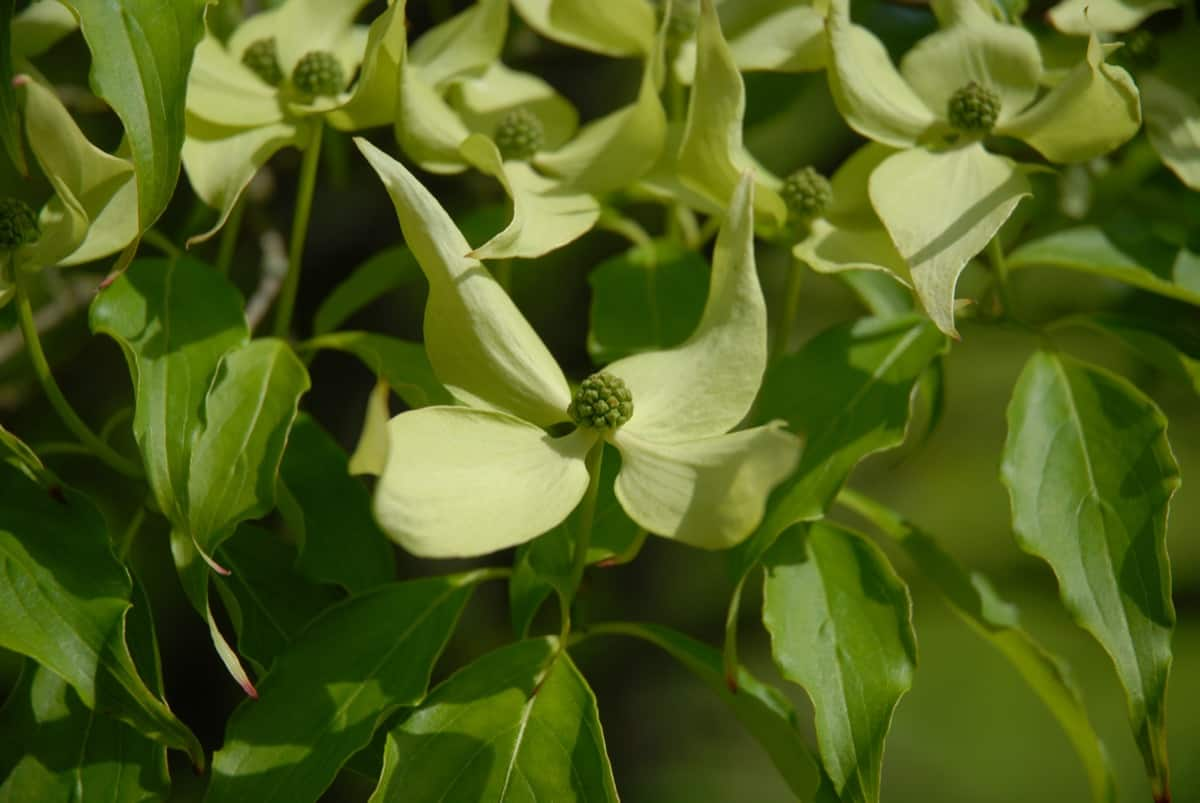
Conclusion
Growing and caring for flowering Dogwood trees can be a rewarding experience for any gardener. These beautiful trees add beauty to your landscape and provide numerous benefits, such as shade, wildlife habitat, and colorful blooms. With proper care and attention throughout the seasons, your flowering Dogwood tree will thrive year after year. Enjoy its stunning blossoms in springtime while providing a welcoming haven for birds and other wildlife in your garden.
- Gardening Techniques in Planting Vegetables
- Where to Place Indoor Plants in Your Home
- How to Grow Tomatoes Organically at Home: A Comprehensive Guide
- Organic Gardening on a Budget: Low-Cost Methods and Materials
- Gongura Seed Germination and Planting Methods
- Cabbage Seed Germination and Selection
- Broccoli Seed Germination and Selection
- Asparagus Seed Germination and Variety Selection
- Seasonal Flower Gardening: Best Practices for Spring, Summer, Fall, and Winter
- How to Grow Hibiscus from Flower
- Plantation Ideas for Home Decoration: A Beginners Guide
- Flower Garden Designs and Layouts for Beginners
- Planting and Spacing Techniques in Papaya: A Beginner’s Guide
- Growing Gold: Essential Techniques for Planting Pineapples
- How to Make Kalanchoe Plant Bushy: Home Remedies and Solutions
- 11 Reasons Why Your Gardenia is Not Blooming: Home Remedies and Solutions
- Eco Elegance: The Guide to Designing a Drought-Tolerant Landscape
- Gardening on a Slope: Strategies for Hillside Landscaping
- Nourish and Flourish: Top Organic Mulches for Thriving House Plants
- Everything You Want to Know about Indian Mogra Flower: Discover Uses and Growing
- Green Thumb Success: Expert Tips for Cultivating Greenhouse Pumpkins All Year Round
- Maximize Growth & Flavor: The Ultimate Guide to Companion Planting in Herb Gardens
- How to Control Rhododendron Problems Naturally: Home Remedies and Organic Ways to Fix Them
- Natural Magic: The Remarkable Benefits of Cinnamon for Plants
- Best Steps to Revive Dying Tulip with Natural and Organic Treatment
- 10 Reasons Why Your Angel Trumpet is Not Blooming: Remedies and Treatment
- How to Fix Periwinkle Leaf and Flower-Related Problems: Natural Remedies and Solutions
- How to Fix Zinnias Leaf and Flower Problems: Discover Natural and Home Remedies
- Organic Steps to Induce Lemon Tree Flowers: A Comprehensive Guide
- Bloom Booster: Crafting the Perfect Homemade Bougainvillea Fertilizer
- Optimizing Growth: A Guide to Applying NPK Fertilizer for Potted Plants
- 10 Best Homemade Fertilizers for Rubber Plant: DIY Recipes and Application Method
- How to Boost Female Pumpkin Flowers: Effective Steps for More Flowers and High Yields
- Transform Your Indoor Garden: Top Benefits of Pink Salt for Houseplants
- 10 Best Homemade Fertilizers for Peacock Plants (Calathea): Easy DIY Guide
- Unlock Blooms: 9 Reasons Why Your Potted Chrysanthemum is Not Blooming